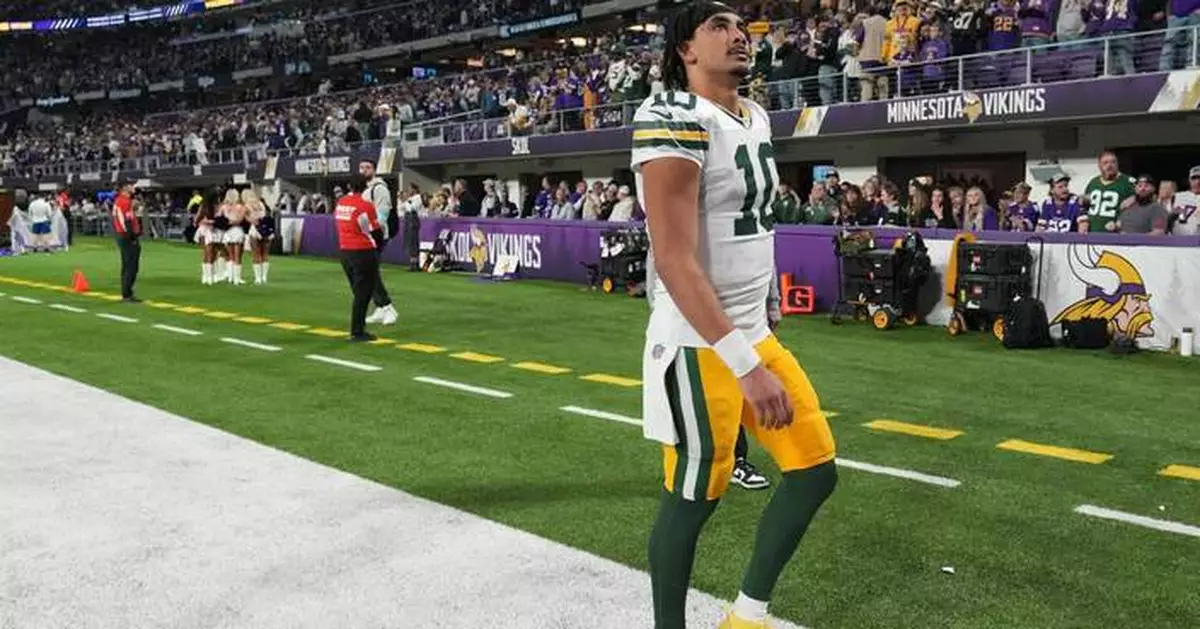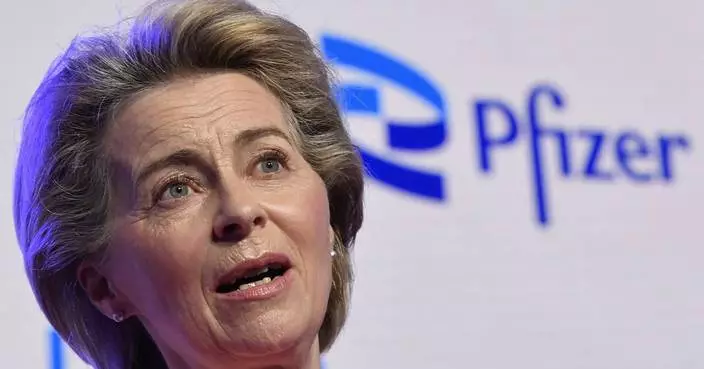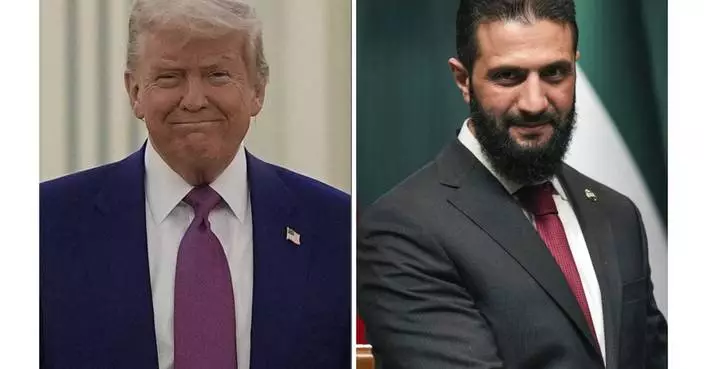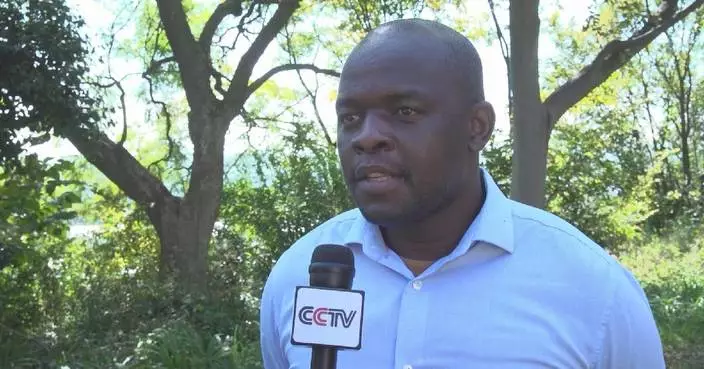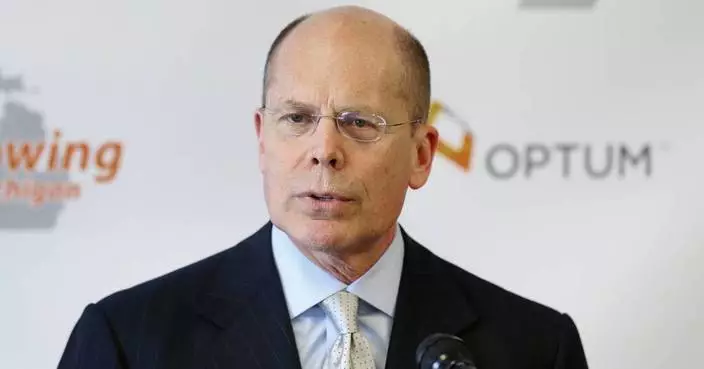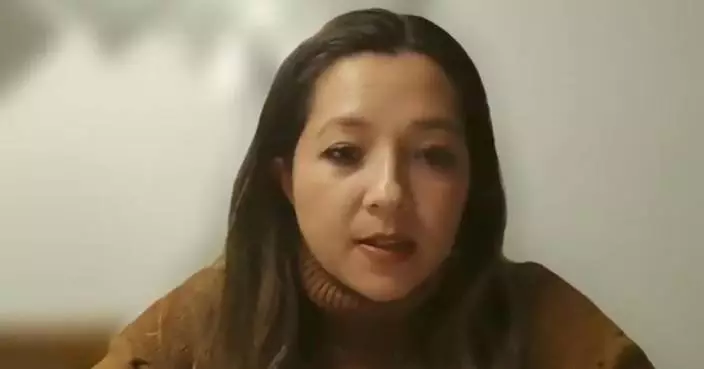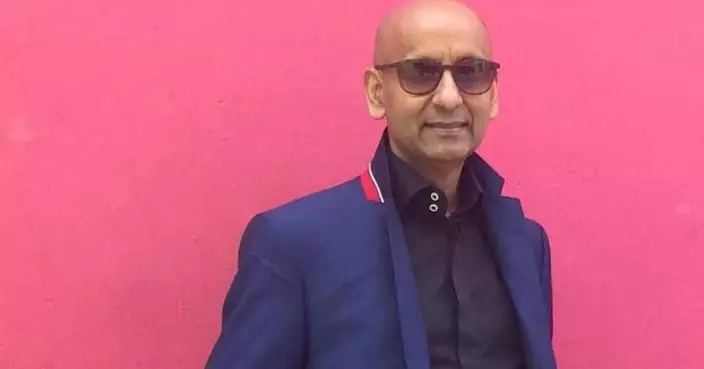MINNEAPOLIS (AP) — The top of the NFC standings are towering over the Green Bay Packers as they move toward the playoffs, casting a long shadow shaped like Vikings, Lions and Eagles over what has been an otherwise-promising season on both sides of the ball.
For as well as the Packers (11-5) had been playing down the stretch, they left Minnesota with a rather murky outlook for the playoffs after stumbling into a 17-point deficit that proved too large for their late surge in the 27-25 loss to the Vikings on Sunday.
Click to Gallery
Green Bay Packers head coach Matt LaFleur reacts during the second half of an NFL football game against the Minnesota Vikings Sunday, Dec. 29, 2024, in Minneapolis. (AP Photo/Abbie Parr)
Minnesota Vikings' Jonathan Bullard stops Green Bay Packers' Josh Jacobs during the first half of an NFL football game Sunday, Dec. 29, 2024, in Minneapolis. (AP Photo/Abbie Parr)
Green Bay Packers' Josh Jacobs fumbles as he is hit by Minnesota Vikings' Jerry Tillery during the first half of an NFL football game Sunday, Dec. 29, 2024, in Minneapolis. (AP Photo/Abbie Parr)
Green Bay Packers' Jordan Love scrambles during the second half of an NFL football game against the Minnesota Vikings Sunday, Dec. 29, 2024, in Minneapolis. (AP Photo/Bruce Kluckhohn)
Green Bay Packers' Jordan Love walks off the field after an NFL football game against the Minnesota Vikings Sunday, Dec. 29, 2024, in Minneapolis. (AP Photo/Abbie Parr)
“They continued to compete and battle, but you just can’t do that against good teams. The margins in this league, especially against a good football team, are razor thin," coach Matt LaFleur said. "I don’t think we were at our best, but that’s a credit to them in our slow start — and that’s me as much as anybody.”
The Packers gained 126 yards in the fourth quarter and still finished with a season-low 271 yards. The defense allowed 441 yards, which was also a season worst.
The most glaring set of numbers after this frustrating afternoon, though, was this: 0-5. That's Green Bay's record against the top three teams in the NFC: Minnesota, Detroit and Philadelphia.
There's no shame in losing to those opponents that carry a combined 40-7 record into Monday, particularly when four of those defeats — save for the 10-point loss to the Lions on Nov. 3 — came by a total of 12 points.
“It’s not about who we can and can’t beat. We can beat everybody. If we figure out how to finish, we’ll win games,” cornerback Keisean Nixon said.
But the Packers will more than likely be on the road the entire time they're alive in the playoffs, so any path to the Super Bowl would undoubtedly trigger rematches with one, two or even all three teams from that daunting trio.
The Packers clearly aren't overmatched by the Vikings, Lions or Eagles, but in games against those premier foes that significantly shrink the margins for error the Packers have shown a troubling pattern of not meeting the moment with too many ill-timed mistakes and not enough big-time plays.
“It's hard when you put yourself in a hole and are down early and just kind of shooting yourself in the foot,” quarterback Jordan Love said. “There’s so much stuff to clean up and get better at, but I think we’re still a really good team. We can put up points. But when you put yourself in a hole, it’s just hard to climb out of that hole. And when it’s a good team like the Vikings, you know, it just makes it even tougher.”
The red flag came right away.
Josh Jacobs, the NFL 's fourth-leading rusher, had just given the Packers a second first down on the opening drive of the game when defensive tackle Jerry Tillery pushed the ball out and safety Cam Bynum recovered at the Minnesota 38. Jacobs had gone 11 straight games without fumbling until losing one at Seattle on Dec. 15. Now he has coughed up the ball twice in three games.
“I feel like it drained the energy out of the team just starting early,” Jacobs said. “I take it personal on getting the team to start fast and things like that. Yeah, that’s on me.”
Though the Vikings punted on the subsequent possession, they moved the ball enough to flip the field position. Perhaps wary of the fumble getting in Jacobs' head, LaFleur then called three straight passes from their own 15-yard line, and Love was off the mark on all three to force a punt.
After a breakout performance here a year ago in a 33-10 victory over the Vikings that helped the Packers squeak into the playoffs after a rough start and ride the momentum through a first-round win at Dallas, Love looked awfully amid the cocktail of blitzes ordered by Vikings defensive coordinator Brian Flores that fueled a fierce pass rush. He finished 19 for 30 for 185 yards and one touchdown.
“They do a good job of keeping a lid on the coverage. That’s how they play," LaFleur said. "We knew that going in, so there was going to be minimal opportunities to push the ball down the field. You've got to be super efficient. You've got to stay on schedule because once they get you into third down, that’s where they’re really good.”
AP NFL: https://apnews.com/hub/NFL

Green Bay Packers head coach Matt LaFleur reacts during the second half of an NFL football game against the Minnesota Vikings Sunday, Dec. 29, 2024, in Minneapolis. (AP Photo/Abbie Parr)

Minnesota Vikings' Jonathan Bullard stops Green Bay Packers' Josh Jacobs during the first half of an NFL football game Sunday, Dec. 29, 2024, in Minneapolis. (AP Photo/Abbie Parr)
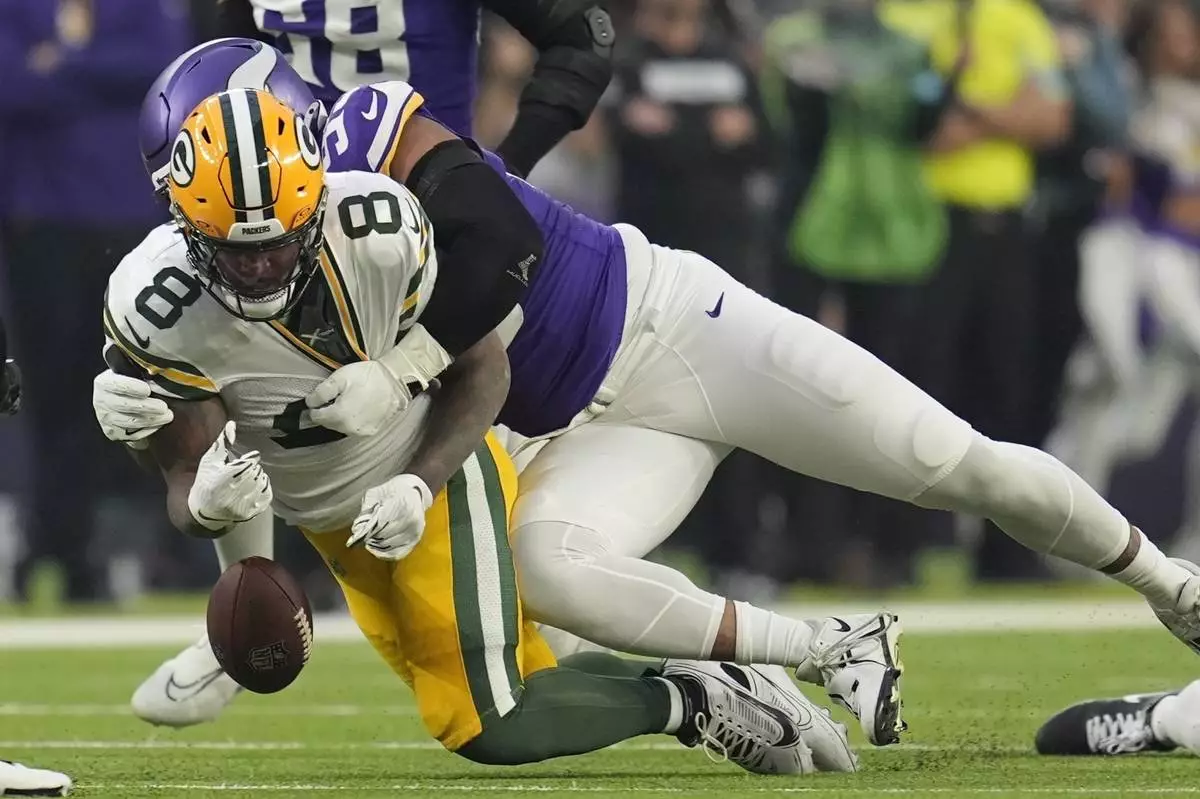
Green Bay Packers' Josh Jacobs fumbles as he is hit by Minnesota Vikings' Jerry Tillery during the first half of an NFL football game Sunday, Dec. 29, 2024, in Minneapolis. (AP Photo/Abbie Parr)
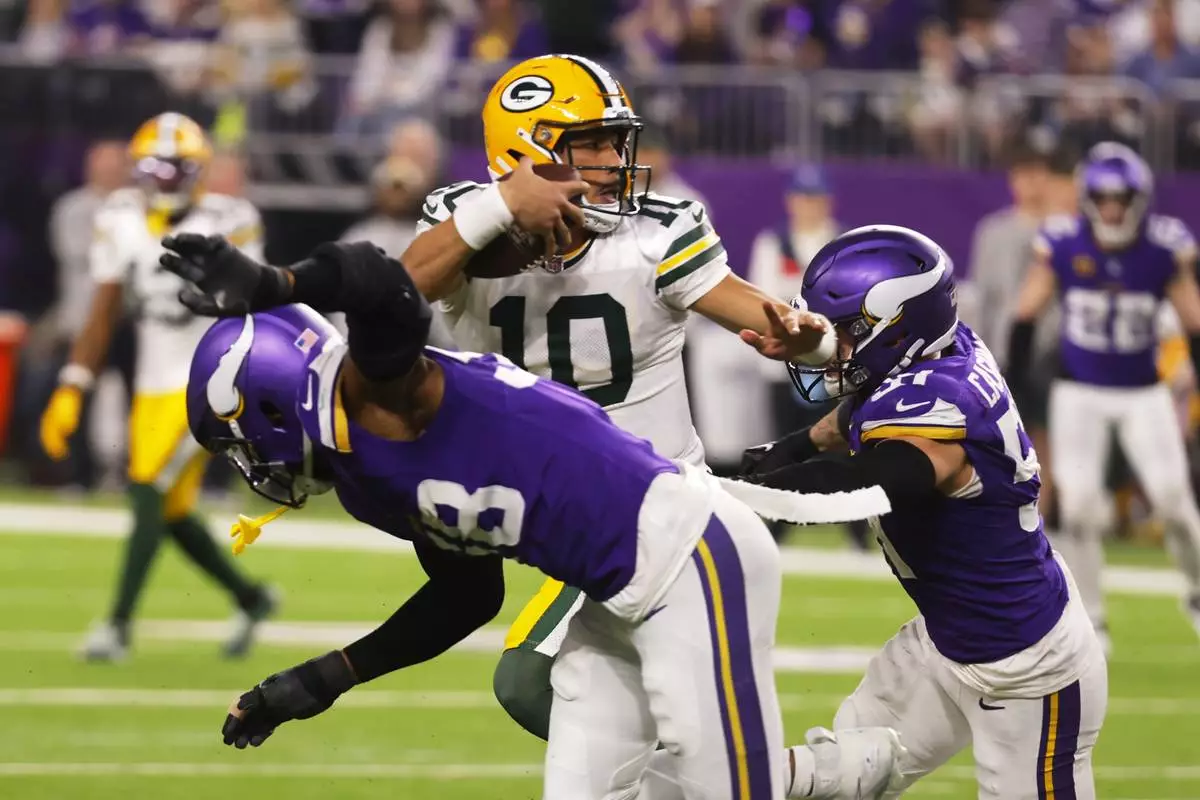
Green Bay Packers' Jordan Love scrambles during the second half of an NFL football game against the Minnesota Vikings Sunday, Dec. 29, 2024, in Minneapolis. (AP Photo/Bruce Kluckhohn)

Green Bay Packers' Jordan Love walks off the field after an NFL football game against the Minnesota Vikings Sunday, Dec. 29, 2024, in Minneapolis. (AP Photo/Abbie Parr)
President Donald Trump met with the new Syrian leader, a onetime insurgent, in a stunning engagement on Wednesday in Saudi Arabia. Trump was to wrap up his visit to the kingdom later in the morning and head to Qatar, the second leg of his three-nation Middle East tour this week.
Trump said the rapprochement with Syria came at the urging of Saudi Crown Prince Mohammed bin Salman and Turkish President Recep Tayyip Erdogan.
“There is a new government that will hopefully succeed,” Trump said of Syria, adding, “I say good luck, Syria. Show us something special.”
On Tuesday, Trump received a lavish welcome in Riyadh, where he announced he would move to lift sanctions on Syria to give the country “a chance at peace.” He also focused on dealmaking with the kingdom, a key Mideast ally, and touched on shared concerns about Iran’s nuclear program and the war in Gaza.
Trump also urged Iran to take a “new and a better path” as he pushes for a new nuclear deal and said he wanted to avoid conflict with Tehran. Trump and Prince Mohammed, the kingdom's de facto ruler, signed a host of economic and bilateral agreements.
Here's the Latest:
Iran’s Foreign Minister Abbas Araghchi expressed displeasure at Trump’s announcement about the lifting of U.S. sanctions on Syria.
Araghchi, who is Iran’s nuclear negotiator, slammed Trump as having a “very deceitful viewpoint.”
“What he stated about the hope of regional nations for a progressive, flourishing path, is the same path that people of Iran decided through their revolution,” Araghchi said.
“It was the U.S. that blocked progress of Iranian nation through sanctions for more than 40 years as well as its pressures, military and nonmilitary threats,” he added.
Trump told GCC leaders in Riyadh that he wanted to secure a deal that would prevent Iran from obtaining nuclear weapons.
He said he hoped for a “future of safety and dignity of the Palestinian people” but not with Gaza’s current leaders, Hamas, who he said “delight in raping, torturing and murdering innocent people.” He said his sanctions relief for Syria would “give them a fresh start.”
He told the room of regional leaders that the the world was watching them “with envy” but added: “if we can simply stop the aggression from a small group of pretty bad actors.”
Trump also dove into U.S. politics, making sure to mention his victory in the 2024 election, which he called historic. He said the Biden administration “created havoc and bedlam.”
The photos show Syrian interim president, Ahmad al-Sharaa, shaking hands with the Saudi crown prince, with Trump standing behind them. The three leaders later posed for a photo, Trump smiling broadly. Turkish President Recep Tayyip Erdogan had joined the gathering by phone.
The source of the photos was not immediately clear, though Syrian activists and others shared them and local Saudi-owned media began publishing them.
White House Press Secretary Karoline Leavitt said later in a statement that Trump urged al-Sharaa to “do a great job for the Syrian people.”
He also asked him to diplomatically recognize Israel, “tell all foreign terrorists to leave Syria” and help the U.S. stop any resurgence of the Islamic State group, as well as having Syrian government “assume responsibility” for detention centers holding IS militants.
For his part, al-Sharaa expressed "hope that Syria would serve as a critical link in facilitating trade between east and west, and invited American companies to invest in Syrian oil and gas,” Leavitt wrote.
French President Emmanuel Macron strongly denounced Israeli Prime Minister Benjamin Netanyahu’s decision to block aid from entering Gaza as “a disgrace” that is causing a major humanitarian crisis.
“I say it forcefully, what Benjamin Netanyahu’s government is doing today is unacceptable,” Macron said Tuesday evening on TF1 national television as he was asked about the situation in Gaza.
“There’s no medicine. We can’t get the wounded out. Doctors can’t get in,” Macron said. “What he’s doing is a disgrace, it’s a disgrace!”
Macron, who visited injured Palestinians in El Arish hospital in Egypt last month, called on reopening the Gaza border to humanitarian convoys as a priority. “Then, yes, we must fight to demilitarize Hamas, free the hostages and build a political solution,” he said.
The Israeli prime minister made the request during his visit to Washington last month, according to the official. The official says the request was made out of concern that a cross-border attack similar to Hamas’ Oct. 7, 2023, assault, could come from Syria.
The official spoke on condition of anonymity because they were not authorized to discuss the request with the media.
Israel fears that the new Syrian president and his Islamist past could pose a threat on its northern border.
Trump on Tuesday said he would ease sanctions on Syria and move to restore ties with its new leader. The move is just the latest disagreement between the U.S. and Israeli leaders who have differed on how to approach Iran and the Iranian-backed Houthi rebels, among other regional issues. Trump’s first term policies were overwhelmingly favorable to Israel.
— By Tia Goldenberg in Tel Aviv, Israel;
The meeting between Trump and Syria’s interim President Ahmad al-Sharaa was the first such encounter between the two nations’ leaders in 25 years.
It took place on the sidelines of Trump sitting with the leaders of the Gulf Cooperation Council. Reporters were not allowed in to witness the stunning engagement.
It was a major turn of events for a Syria still adjusting to life after the over 50-year, iron-gripped rule of the Assad family.
People across Syria cheered in the streets and shot off fireworks Tuesday night to celebrate after Trump announced he would move to lift U.S. sanctions on Syria, hopeful their nation locked out of credit cards and global finance might rejoin the world’s economy when they need investment the most.
The strikes took place overnight on Tuesday and early Wednesday, the Indonesian Hospital in Jabaliya reported.
They came a day after Hamas released an Israeli-American hostage in a deal brokered by the United States, and as Trump was in Saudi Arabia.
Israeli Prime Minister Benjamin Netanyahu said on Tuesday that there was “no way” Israel would halt its war in Gaza, dimming hopes for a ceasefire spurred by the Trump administration's efforts in the region.
Israel's military spokesperson Col. Avichay Adraee has urged people to evacuate the ports of Ras Isa, Hodeida and Salif, where he says the Iran-backed Houthi rebels operate.
The warnings came as Trump continues his visit to the region and after the U.S. reached a ceasefire deal with the Houthis. The Israeli military made a similar warning for people to evacuate the ports on Sunday but did not follow that up with strikes.
Last week, Israel carried out a two-day strike on the Houthis, including the airport in Yemen’s capital, after the Houthis launched a missile that struck the grounds of Israel’s main international airport.
Syrians cheered Trump's announcement that America will move to lift sanctions on the beleaguered Middle East nation. People in the capital, Damascus, whistled and cheered the news as fireworks lit the night sky.
The state-run SANA news agency published video and photographs of Syrians cheering in Umayyad Square. Others honked their car horns or waved the new Syrian flag in celebration.
Trump’s planned meeting with the country’s rebel-turned-leader Ahmad al-Sharaa represents a remarkable political turnaround for Syria, which has been locked in a bitter war since the 2011 Arab Spring. In December, rebels led by al-Sharaa toppled Syrian autocrat Bashar Assad’s government.
Al-Sharaa, who was imprisoned in Iraq for his role in the insurgency following the 2003 U.S.-led invasion, will be the first Syrian leader to meet an American president since Hafez Assad met Bill Clinton in Geneva in 2000.
▶Read more about sanctions on Syria
The U.S. once offered $10 million for information about the whereabouts of the insurgent then known by the nom de guerre Abu Mohammed al-Golani. He had joined the ranks of al-Qaida insurgents battling U.S. forces in Iraq after the U.S.-led invasion in 2003 and still faces a warrant for his arrest on terrorism charges in Iraq.
Syria’s new president came back to his home country after the conflict began in 2011, and led al-Qaida’s branch that used to be known as the Nusra Front.
He later changed the name of his group and cut links with al-Qaida before they finally succeeded in overthrowing President Bashar Assad in December.
Syria’s Foreign Ministry on Tuesday night called Trump's statement about the sanctions a pivotal turning point for the Syrian people as they "seek to emerge from a long and painful chapter of war.”
The statement also was careful to describe the sanctions as coming “in response to the war crimes committed by the Assad regime against the Syrian people,” rather than the war-torn nation’s new interim government.
“The removal of these sanctions offers a vital opportunity for Syria to pursue stability, self-sufficiency and meaningful national reconstruction, led by and for the Syrian people,” the statement added.
The Israeli military issued a statement on Wednesday morning announcing the missile fire from Yemen after sirens sounded in the country.
“A missile launched from Yemen was intercepted,” the Israeli military said. “Sirens were sounded in accordance with protocol.”
The Houthis had launched another missile just after Trump addressed an investment summit in Riyadh on Tuesday. Trump had earlier announced a ceasefire between America and the rebel group.
The Houthis have been attacking Israel over the Israel-Hamas war in the Gaza Strip and Israel’s decision to bar aid to the beleaguered Palestinian enclave. The Iranian-backed rebels also are locked in a stalemated war with a Saudi-led coalition backing the country’s long-exiled government.
The Houthis did not immediately claim the attack, though it can take hours or even days for them to acknowledge an assault.
The foreign ministry bolstered its travel cautions for New Zealanders visiting the United States, the first such update since Trump took office, officials said Wednesday. The travel advice hadn’t been fully updated since 2023, the statement said.
Language added to the guidance for U.S.-bound travelers included an alert that visitors “may encounter scrutiny from U.S. border authorities,” including inspection of their travel documents, reason for travel and personal belongings.
It also warned travelers to “expect strict enforcement” of entry conditions and caution of “detention, deportation and ban from re-entry” if travelers don’t comply.

Syrians wave Saudi and Syrian flags in celebration after U.S. President Donald Trump announced plans during his visit to Saudi Arabia to ease sanctions on Syria and normalize relations with its new government, in Homs, Syria, late Tuesday, May 13, 2025.(AP Photo/Omar Albam)

Syrians celebrate after U.S. President Donald Trump announced plans during his visit to Saudi Arabia to ease sanctions on Syria and normalize relations with its new government, in Homs, Syria, late Tuesday, May 13, 2025.(AP Photo/Omar Albam)

Syrians wave Saudi and Syrian flags in celebration after U.S. President Donald Trump announced plans during his visit to Saudi Arabia to ease sanctions on Syria and normalize relations with its new government, in Homs, Syria, late Tuesday, May 13, 2025.(AP Photo/Omar Albam)

Syrians celebrate after U.S. President Donald Trump announced plans to ease sanctions on Syria and move toward normalizing relations with its new government to give the country 'a chance at peace,' in Idlib, Syria, Tuesday, May 13, 2025. (AP Photo/Ghaith Alsayed)

President Donald Trump waves as he leaves the Royal Palace after a signing ceremony with Saudi Crown Prince Mohammed bin Salman in Riyadh, Saudi Arabia, Tuesday, May 13, 2025. (AP Photo/Alex Brandon)

President Donald Trump and Saudi Crown Prince Mohammed bin Salman walk for a signing ceremony at the Royal Palace in Riyadh, Saudi Arabia, Tuesday, May 13, 2025. (AP Photo/Alex Brandon)

President Donald Trump and Saudi Crown Prince Mohammed bin Salman pose for a photo at the Saudi-U.S. Investment Forum at the King Abdulaziz International Conference Center in Riyadh, Saudi Arabia, Tuesday, May 13, 2025. (AP Photo/Alex Brandon)

President Donald Trump and Saudi Crown Prince Mohammed bin Salman gesture as they meet delegations at the Royal Palace in Riyadh, Saudi Arabia, Tuesday, May 13, 2025. (AP Photo/Alex Brandon)







